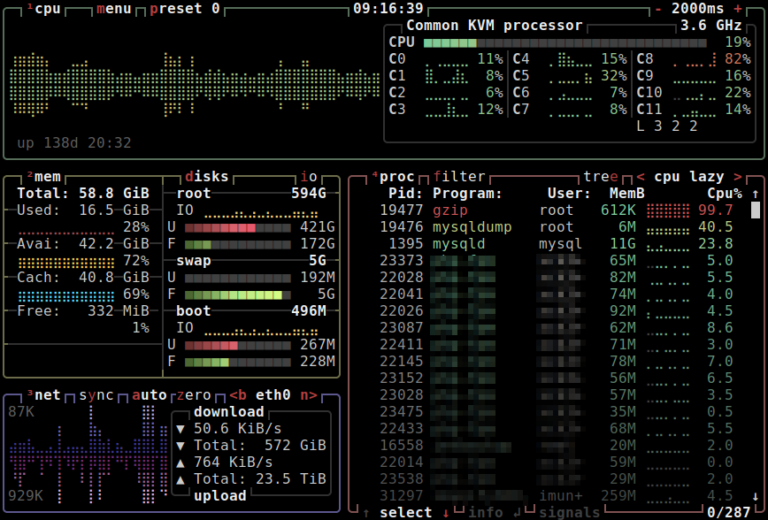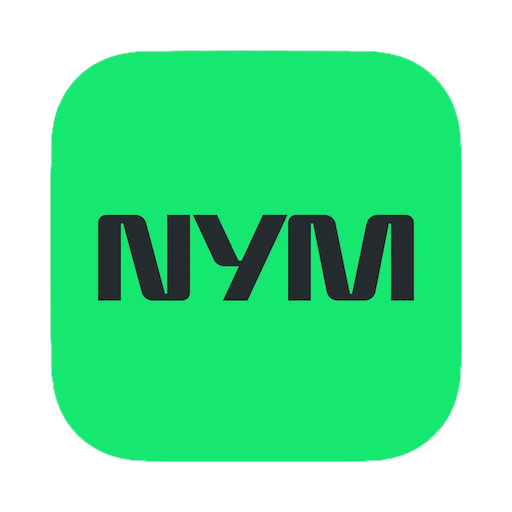Apr 18, 2025
12min Read
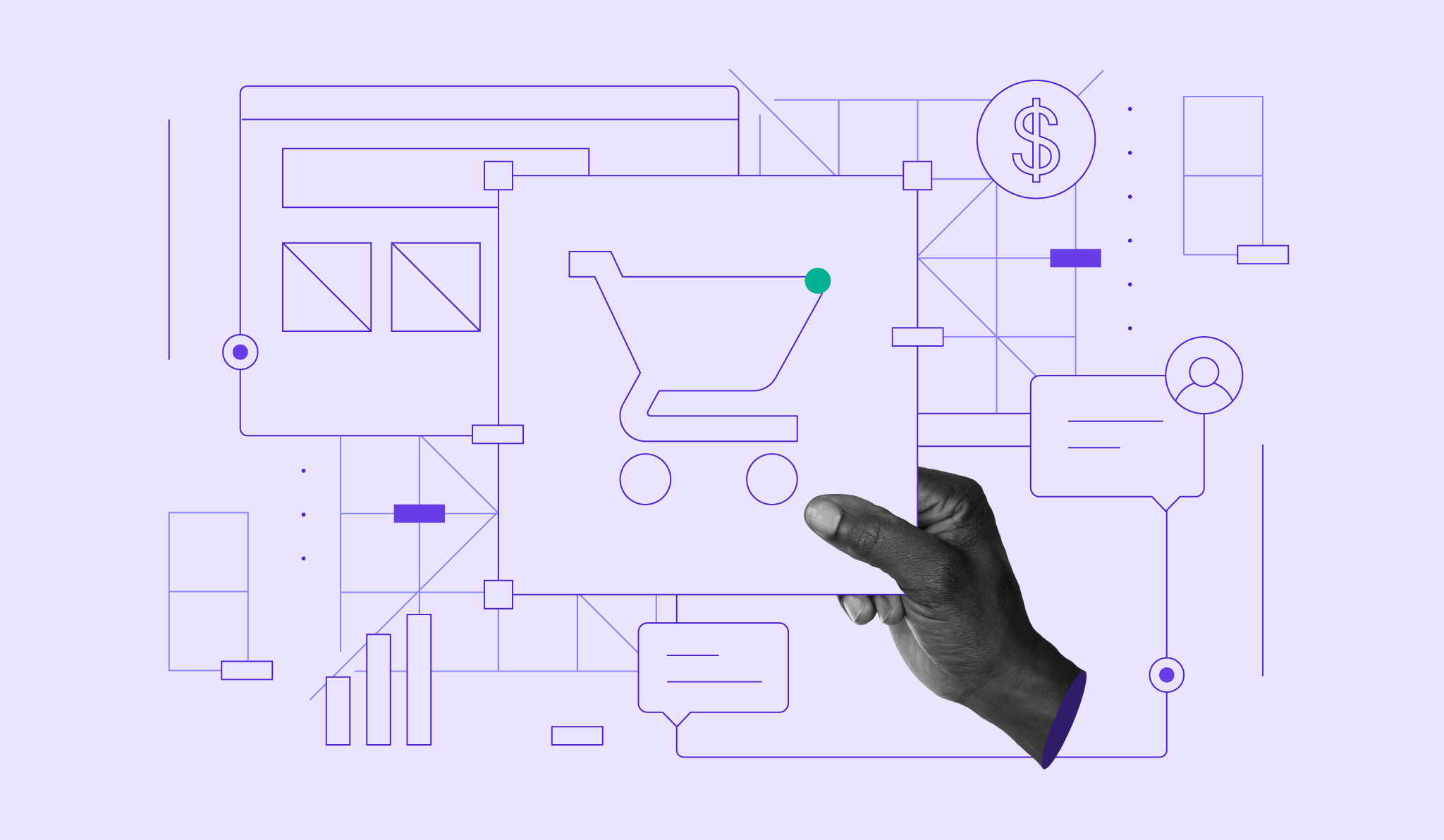
Whether you’re a solo entrepreneur with big dreams or an established brand planning a website, you’ll need to make key decisions that fit your budget and goals.
Should you buy that premium theme or invest in a custom design? Is that expensive plugin worth the monthly fee, or should you put that money toward marketing instead? How do you balance what you spend now versus ongoing costs?
These answers will differ for every business, which is why ecommerce website costs vary so much – from under $100 for simple setups to over $10,000 for custom development.
This guide cuts through the confusion and walks you through every cost category, from domain registration and hosting to design, development, and maintenance.
Importantly, we’ll also reveal strategic approaches to maximize your investment at every stage of your online journey.
Ready to learn exactly where your money should go to drive your ecommerce success? Let’s dive right in.
Costs breakdown
In general, website costs vary significantly based on your specific needs and requirements, and ecommerce ones are no exception.
Here’s a breakdown of the ranges to consider:
Essential ecommerce costs
| Item | Description | Cost range |
| Domain | Your website’s address | $10-$30/year |
| Hosting | Where your website files are stored | $2.99-$29.99/month |
| Ecommerce platform | Software for your online store | $3.99-$2,300/month |
| Design | Website themes and customizations | $0-$50,000 one-time |
| Transaction fees | Fees for online payments | 2.4% to 3.49% + fixed fee per transaction |
Additional ecommerce costs
| Item | Description | Cost range |
| SEO and marketing | Attracting customers to your store | $0-$10,000/month |
| Shipping | Delivery costs and platform fees | Varies based on size, weight, distance |
| Warehousing | Product storage and fulfillment space | $7-$15 per square foot per month |
| Inventory management | Systems to track and manage products | $100-$500/month |
| Website maintenance | Ongoing website updates | $0-$2,000/month |
| Integrations | Connecting with other services and systems | $0-$5,000/month |
| Contingencies | Buffer for unexpected expenses | 10-20% of total budget |
Total costs
For a small to medium-sized online store, a basic setup using an all-in-one ecommerce site builder could range from $30 to $300 per month.
A complex store with custom design, advanced features, and extensive marketing could range from $1,000 to $10,000+ monthly.
Now, let’s dig deeper into each of these categories.
Essential ecommerce cost components
Before you can start selling online, you’ll need to invest in these core elements.
Ecommerce domain name and hosting
When building an ecommerce website, two basic components you need are a domain name and web hosting.
Domain name costs
A domain name is your website’s address online, like www.youronlinestore.com. It helps customers find you and makes your business look professional.
Pricing depends on the domain extension you choose, where you register it, and the name’s popularity.
Here’s a breakdown of what you’ll pay for different types of domains:
- Regular .com domains: $10-$20/year
- Ecommerce-specific TLDs (.store, .shop): $20-$30/year
- Country domains (.uk, .com.au): $10-$25/year
- Premium domains: $100s or $1000s
Try our domain name generator to see how much your preferred domain name would cost.
Domain Name Checker
Instantly check domain name availability.
Web hosting costs
Web hosting is a service that stores your website files and makes them available online. Good hosting keeps your site fast, secure, and always accessible.
Like domains, different types of hosting are available depending on your needs and preferences.
Here is a rundown of hosting costs:
- Web hosting. Your website shares server space and resources with other websites. From $1.99/month to $13.99/month.
- Virtual Private Server (VPS) hosting. You get dedicated resources on a shared server. From $4.99/month to $35.99/month.
- Cloud hosting. Uses multiple connected servers for better performance. From $7.99/month to $69.99/month.
Ecommerce platform cost
Every ecommerce platform offers different prices depending on your business size, how many products you sell, and what features you need.
Here’s a breakdown of different ecommerce software solutions and the costs involved in each one.
- Hostinger’s Ecommerce Website Builder. Starting at $2.99/month, you get hosting and built-in ecommerce tools to sell up to 500 products. Easily upload images to generate product details with AI, offer 100+ payment methods, and pay no transaction fees.
- Shopify. Subscription fees range from $29/month to $299/month, with the enterprise tier starting at $2,300/month. Transaction fees between 0.6-2% apply unless using Shopify Payments. Apps can be purchased for additional features ranging from $10/month to over $100/month.
- WooCommerce. A free WordPress plugin that requires hosting and potentially project setup fees. Premium themes can be bought to personalize the layout, with prices ranging from $50 to $200, while hundreds of free and paid plugins, ranging from $40 to $200, are available for additional features.
- BigCommerce. Plans start at $29.95/month up to $299.95/month, with no transaction fees. The platform automatically upgrades your plan as sales volume increases, offering essential features like multi-currency support and mobile-responsive design.
While several options are available, the best choice and overall cost depend on your specific needs and budget.

Website design and ecommerce development
Your ecommerce website’s design is like your digital storefront. Just as a physical store needs an attractive appearance and smart layouts, your ecommerce store needs thoughtful design to drive sales and build customer trust.
Well-designed ecommerce sites with good UI/UX elements can increase conversion rates. These design elements include simple navigation, streamlined checkouts like a one-click checkout, and mobile responsive design.
Here’s what you need to consider when designing your website:
Template design costs
Ready-made ecommerce templates typically range from free to $300 for a one-time purchase. Free templates are available on most ecommerce platforms, while premium templates offer more advanced features and unique designs.
A good alternative is to use AI to create personalized templates. For example, Hostinger’s Ecommerce Website Builder uses AI to create a layout with matching colors, product images, and content blocks based on your description.
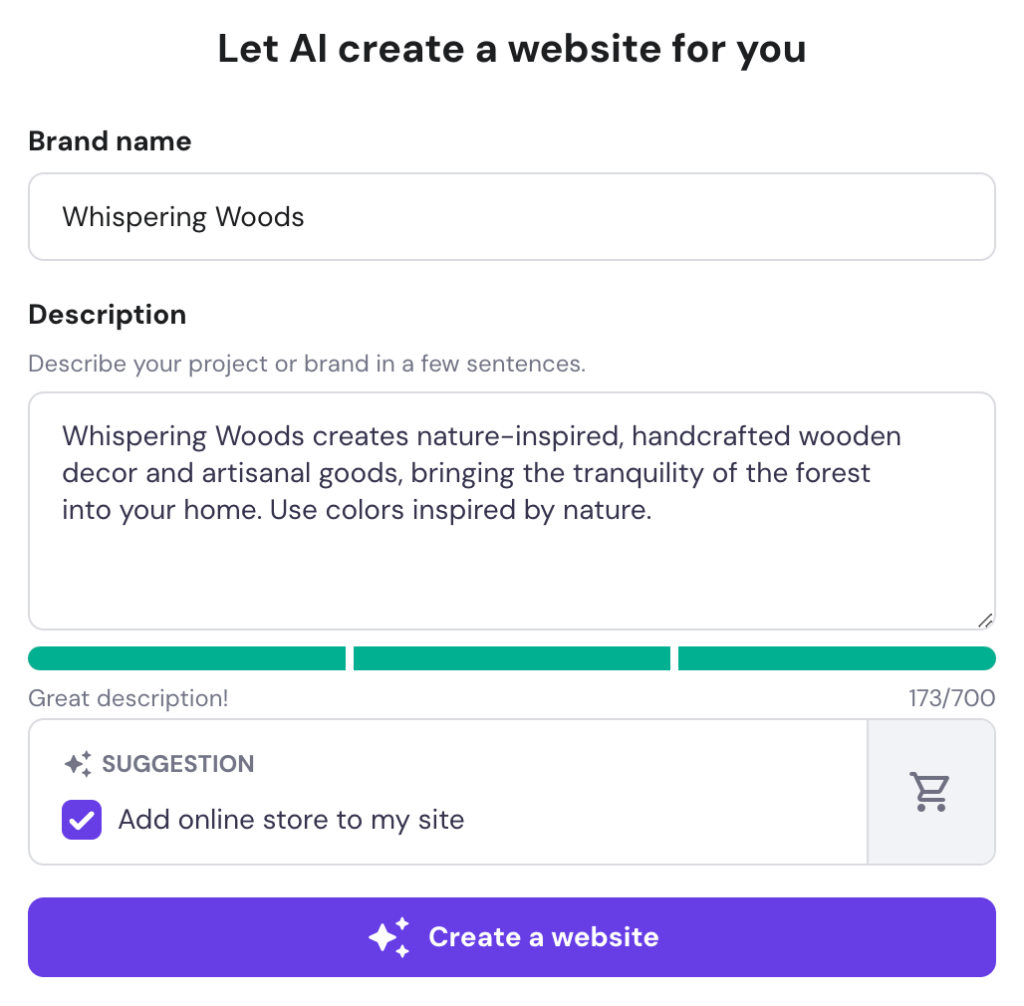
Custom design costs
Custom ecommerce website development can range from $1,000 to upwards of $50,000 or more, depending on the level of customization and complexity.
Frontend developers create what customers see and interact with, such as product galleries, transitions and hover effects, and product filtering options. Frontend features range from $1,000 to $20,000 or more.
On the other hand, backend developers build everything behind the scenes that powers the ecommerce store. This includes payment systems, inventory management, customer accounts, and connections to other services. Backend developers cost $10,000 to $50,000 or more, depending on the complexity.
You can hire freelance developers through platforms like Upwork or Toptal. Check their reviews and verify if they can work on your specific project before hiring.
Key differences
The price gap between templates and custom designs reflects essential differences:
- Uniqueness. There may be many other stores using the same template, while custom designs are unique to your brand.
- Customization. Templates are built with preset options, while custom designs are tailored to your specific needs.
- Functionality. Hiring a developer lets you build custom features that templates may not support.
- Scalability. Custom sites can be built to grow with your business, while templates may need major changes as you scale.
Payment processing
Payment processing is a key part of running any online store. Understanding the fees helps you make smart choices that protect your profits.
Here’s a breakdown of the main costs:
Transaction fees
These are charged on each sale and typically include a percentage of the sale amount, sometimes with a fixed fee per transaction.
Shopify, for example, charges 2.9% + $0.30 per transaction on the Basic Plan and 2.4% + $0.30 per transaction on the Advanced Plan when using Shopify Payments. If you use a different payment service, they add an extra fee of 0.5-2% on top of your regular fees.
On the other hand, platforms like WooCommerce and Hostinger’s Ecommerce Website Builder don’t charge any transaction fees, allowing you to keep more of your profit.
Payment gateway fees
Stripe and PayPal are two of the most popular payment gateways. These services process credit card payments and transfer the money to your account. Fees typically include a percentage of the sale price plus a fixed amount per transaction.
Stripe’s standard rate is 2.9% + $0.30 per transaction plus extra charges for international cards and currency conversion. PayPal’s fees are slightly higher at 3.49% + $0.49 per transaction.
Fees comparison table
For a $100 order, let’s see how fees vary depending on your ecommerce software and payment gateway.
| Platform/Gateway | Fee breakdown | Total fee |
| Shopify Basic (Shopify Payments) | 2.9% + $0.30 per transaction | $3.20 |
| Shopify Basic (Stripe) | 2.9% + $0.30 (Stripe) + 2% (Shopify fee) | $5.20 |
| Hostinger’s Ecommerce Website Builder (Stripe) | 2.9% + $0.30 per transaction | $3.20 |
| WooCommerce (PayPal) | 3.49% + $0.49 per transaction | $3.98 |
As you can see, payment processing fees can vary based on the ecommerce platform and payment gateway you use.
Additional and variable ecommerce costs
Beyond the essential costs, your online store will need further investment to grow and stay competitive.
SEO and marketing
Marketing expenses are often one of the most significant costs you’ll face.
Focusing on long-term digital marketing strategies like SEO (Search Engine Optimization) will build lasting brand recognition, generate sustainable traffic, and improve customer retention.
Let’s break down the costs of effective marketing.
SEO
SEO is improving your website’s ranking in search engines by using the right keywords and creating helpful content.
The costs vary based on your approach and resources:
- Do-it-yourself. $0-$500/month for SEO tools, plugins, and subscriptions.
- Hire a freelancer. $500-$2000/month for a freelance specialist.
Some ecommerce platforms, like Hostinger’s Ecommerce Website Builder, offer built-in AI tools that suggest ways to boost your SEO without extra subscriptions.

Paid advertising
This is where you pay for ads on search engines like Google, social media platforms like Facebook, or websites where your target audience hangs out.
- Google ads. The cost starts at $500/month but can be between $1,000 and $10,000/month, depending on the competition.
- Social media ads. These are often between $200 and $1,000/month on Facebook, Instagram, or TikTok.
- Marketplace ads. $300-$3,000/month for Amazon, Etsy, or Ebay placements.
Organic social media
Social media marketing involves growing your brand on platforms like Instagram or Facebook by posting engaging content and connecting with followers.
- Management tools. From $15-$300/month for scheduling tools like Hootsuite or Buffer that help you plan and post content across multiple platforms.
- Content creation. Between $0-$1,000/month for design tools like Canva, graphic design, and photo and video editing services.
- Influencer partnerships. From $50 to $5,000 per post, depending on the influencers’ followers and engagement.
Content marketing
Content marketing involves creating helpful blog posts, videos, or guides that attract customers and demonstrate your authority.
- Blog content. Can be free if you do it yourself, or up to $500 or more per article if you hire a writer.
- Helpful videos. $50-$1,000 per video, depending on the video editing software and equipment required.
- Guides and resources. You can create these yourself for free, or hire writers and designers to create them for up to $1,000 each.
Average marketing costs
For new ecommerce businesses, the average marketing costs range from $500-$1,000 per month for the first year.
A typical starter marketing budget might look like this:
- SEO. $50-$500/month.
- Paid ads. $500/month.
- Social media. $20-$100/month.
- Content marketing. $100-$400/month.
While you could handle all the marketing yourself to save money, remember that your time is valuable, especially with other crucial business tasks demanding your attention.
Investing in digital marketing can free you up and help you gain traction for your business.
Logistics and fulfillment
Let’s explore what costs are involved and how they change as your business grows.
Shipping costs
Shipping is one of the most obvious expenses for online stores, affecting both your profits and customer satisfaction.
Depending on your shipping service, light packages under 2kg (4.4 lbs) can cost up to $4 each, while heavier packages and pallets can cost up to $80 or more each.
Your shipping costs will also depend on the speed of delivery, the package size and weight, and the distance between the warehouse and your customer.
As your business grows, shipping costs per package usually decrease due to carrier volume discounts.
Warehousing costs
Warehousing costs include physical storage and the systems needed to manage inventory effectively.
Renting storage space can cost between $7 and $15 per square foot, while renting pallet storage can cost about $10/month per pallet.
Small businesses often start with home storage or small rented spaces, but growth can require larger warehouses. While total costs increase with business size, the price per order typically decreases as fixed costs are spread across more orders.
Inventory management costs
Inventory management includes all activities from receiving products to preparing them for shipment.
These costs might involve:
- Receiving inventory. Up to $7 per SKU pallet.
- Pick and pack operations. Up to $2 per order.
- Labor costs. $15-$25 per hour for warehouse staff.
- Inventory management software. $100-$500/month.
When starting out, you will typically use a manual method and a simple spreadsheet to track inventory.
As your business grows, inventory gets more complex with more products and order types, requiring automated systems and better tracking.
Maintenance and security
Running an ecommerce site requires ongoing attention to keep it working properly and securely.
Here’s a breakdown of the ecommerce website maintenance costs you should plan for.
Ecommerce platforms
Ecommerce platforms like Hostinger’s Ecommerce Website Builder include regular security updates and system maintenance as part of your monthly subscription.
These platforms handle technical upgrades behind the scenes, provide data protection measures like SSL certificates, and add new features continuously without requiring any effort from you.
This hands-off approach lets you focus on running your business rather than managing technical details.
Custom websites
Self-hosted websites built with WooCommerce or Magento require more active maintenance.
With these platforms, you manually update the core software, plugins, and themes to maintain ecommerce functionality and security.
When you need help, developer assistance typically costs $25-$200 per hour, with managed maintenance services ranging from $500 to $2,000 monthly. This investment is essential, as neglecting updates leaves your site vulnerable to security breaches and performance issues.
Integration and software
Like most things in ecommerce, the costs associated with software integrations can vary depending on your business’s scope, features, and complexity.
API integration costs explained
API (Application Programming Interface) integration is the standard way to connect your ecommerce store with other business software. Most services offer API access, allowing different systems to communicate and share data easily.
There are several ways to implement API integrations:
- Do it yourself. If you have the technical skills already, you can do this for free, but learning resources can cost up to $500 if you’re just starting out.
- Hire freelance developers. Depending on the complexity and requirements, the cost can range from $50 to $5,000 per integration.
- Pre-built integration tools. Tools like Zapier and Make offer quick setups with little to no coding, with free plans and paid plans starting from $9/month.
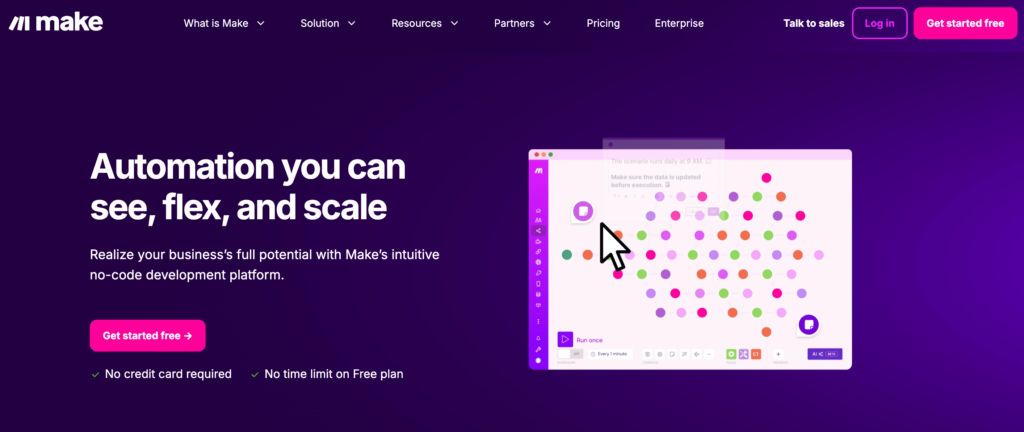
Common software integrations
There are a lot of integration options available, and while you don’t need all of these, here are some common integrations to consider as your business grows:
- CRM. Connect your ecommerce store to customer systems like Salesforce or HubSpot. This lets you create more personalized marketing with costs starting at $15/month.
- Email marketing. For $15-$750/month, you can link your store with email platforms such as Mailchimp, Klaviyo, or ActiveCampaign. This allows you to automate email campaigns and recover abandoned carts.
- Inventory management. Sync your product inventory across multiple sales channels using systems like Odoo, which has a free plan with paid plans for more advanced features starting at $30/month.
- Shipping and fulfillment. Automate shipping through services like ShipStation or Shippo, which allow you to print labels and connect with shipping carriers. Costs range from free to $99.99/month.
- Accounting. Connect your sales data with financial systems such as QuickBooks or Xero, allowing you to eliminate manual data entry. Starts at $2.90/month and can reach up to $117.50/month for more detailed accounting.
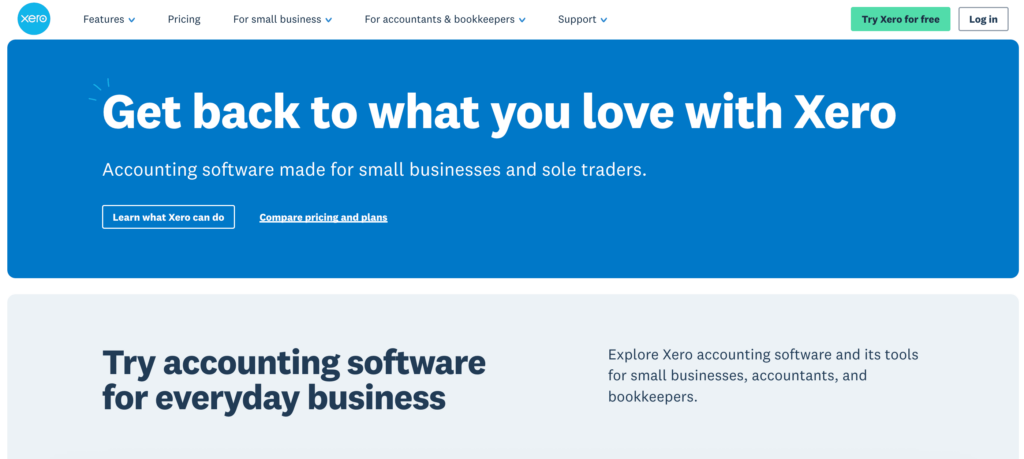
Contingency costs
One of the most overlooked parts of building an ecommerce business is setting aside money for unexpected expenses.
Why contingency planning is important
Technical challenges, changing requirements, and unforeseen problems are common in ecommerce. A contingency budget provides a safety net, allowing you to navigate uncertainties without cutting important features or goals.
Common unexpected expenses might include:
- Technical issues. Problems may arise during development that require extra time or developers to solve, such as database errors or security issues with third-party tools.
- Scope changes. As your project moves forward, you might identify new features that weren’t in the original plan, like adding a wishlist feature or support for different currencies.
- Integration bugs. Connecting payment systems, shipping calculators, or inventory management sometimes gets more complex than expected.
- Performance optimization. Your site may need additional work or a better hosting plan to handle unexpected traffic surges.
- Security enhancements. New security threats might require additional protective measures.
How to budget for contingencies
Don’t let unexpected costs derail your goals. Here are practical strategies to build a solid contingency plan:
- Build a contingency fund. Set aside 10-20% of your ecommerce website budget for unexpected expenses.
- Prioritize your features. Identify “must-have” versus “nice-to-have” elements to know what can be delayed or cut while keeping core features.
- Use a phased approach. Launch products in stages rather than all at once, allowing you to test systems, manage costs, and adjust based on what you learn.
- Choose flexible solutions. Select platforms and partners that make it easy to scale so you can adjust your approach if financial issues occur without having to start over.
Cost optimization tips
Setting up an ecommerce site can be a significant investment, but with good planning, you can minimize costs without sacrificing quality.
Here are practical ways to optimize your expenses.
Reduce initial setup costs
- Choose the right solution. Identify your current business needs and decide which solutions are appropriate. Platforms like Hostinger’s Ecommerce Website Builder are ideal for beginners, offering all-in-one functionality, while advanced users might prefer self-hosted options like WooCommerce.
- Use built-in themes. Save money by using built-in designs that work on mobile and look professional. These layouts allow you to make simple adjustments rather than paying for expensive custom features.
- Go with yearly plans. If your budget allows you, pay yearly for essential services like hosting, domain names, and email tools to get discounts. Choose plans that fit your current needs and only upgrade when your store’s growth demands more resources.
Manage ongoing expenses
- Audit apps and software usage. Regularly check which apps, software, and services you’re actually using and remove unused ones from your setup. Look for solutions that do multiple functions instead of having many single-purpose tools.
- Balance DIY with strategic outsourcing. Learn to handle simple updates and basic SEO yourself, but hire professionals for specialized work like custom adjustments or specific designs.
- Use AI tools. Hostinger’s ecommerce AI suite includes a website builder for quick store creation, tools for editing images and writing product descriptions, plus SEO assistance and heatmap analytics – all for much less than hiring professionals.
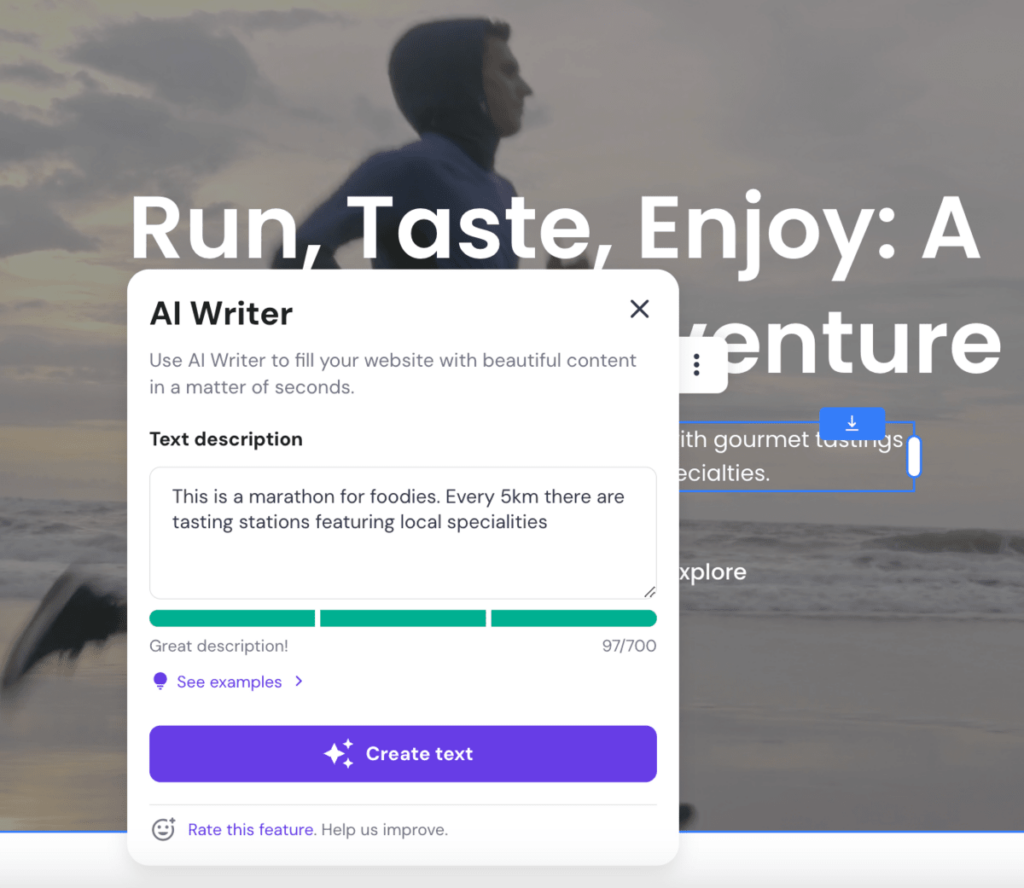
Conclusion
As we’ve explored throughout this guide, ecommerce website costs vary widely. From nimble $40/month setups to robust enterprise solutions exceeding $4,000 monthly with custom development.
So, what’s the takeaway for your situation?
- Choose the setup that matches both your current needs and future goals.
- Budget for the initial setup and ongoing maintenance, with a buffer for unexpected issues.
- Always calculate the total costs before committing, including the platform price, transaction fees, essential plugins, and the occasional developer support.
The key is not to break the bank on fancy tools and flashy features. Instead, assess your priorities and invest thoughtfully for your ecommerce website to thrive in the long run.
Ecommerce website cost – FAQ
How much does an ecommerce website cost?
An ecommerce website’s cost varies based on its complexity and platform choice. A site created with tools like Hostinger’s Ecommerce Website Builder may cost $40-300 per month, while a custom-built site can range from $5,000 to over $50,000, depending on features and size. DIY platforms work well for small businesses, while custom sites require professional developers.
How much to host an ecommerce website?
Hosting costs depend on whether you choose a self-hosted or all-in-one platform. Self-hosted options like our Shared or WooCommerce hosting range from $1.99 to $13.99 per month, while all-in-one platforms like our Ecommerce Website Builder start from $2.99 per month. Your costs might increase based on traffic volume, storage needs, and bandwidth requirements.
How much does it cost to build an ecommerce website on Shopify vs. Hostinger?
Shopify’s prices start at $39 per month for basic plans and can go up to $2,300 for enterprise-level services, but additional costs are required for add-ons. Hostinger is more cost-effective, starting at $2.99 monthly, with a user-friendly interface that includes built-in ecommerce tools, making it ideal for beginners.
How much does it cost to maintain an ecommerce website?
You can maintain your ecommerce website for free if you have the technical skills. Otherwise, it can cost up to $2,000 per month, depending on the site’s size and complexity. Small sites may require minimal maintenance, while large-scale stores might require more due to higher traffic and advanced features. These costs include updates, security monitoring, backups, customer support tools, and marketing integrations.


